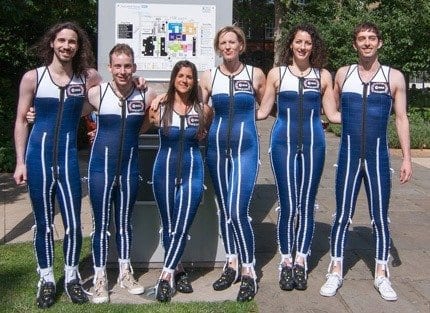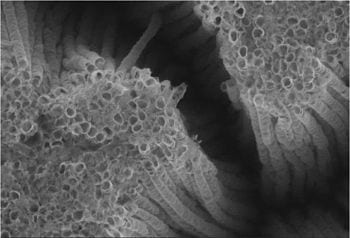
This loading system simulates an additional 1g bodyweight
Researchers at King’s College London are working with Massachusetts Institute of Technology (MIT) and the European Space Agency (ESA) to develop a high-tech, tight-fitted space ‘skinsuit’ to help astronauts overcome back problems in space.
Astronauts’ bodies adapt to weightlessness in space, causing bone and muscle mass to decrease as they are not needed to counteract the force of gravity. The ‘gravity loading countermeasure skinsuit’ utilises a lightweight elastic material that gradually produces cumulative tension, shoulder to foot. It does this by using horizontal strands in the suit as a ‘belt’ which creates a loading system directed towards the feet. This loading system simulates an additional 1g bodyweight, thereby mimicking the gravitational pull of the Earth and the force this generates on our bodies.
In weightlessness, astronauts have been known to grow by up to 7cm as gravity is no longer loading the spine. Many astronauts suffer from backache during their missions as a result of this. When astronauts return to Earth they are four times more likely to suffer a slipped disc than usual, meaning they have to take care as they exercise their bodies back into shape.
Phil Carvil, Centre of Human & Aerospace Physiological Sciences (CHAPS) at King’s, said: ‘Here on Earth we are constantly resisting gravity, meaning that even by sitting and walking around we’re exercising our muscles and bones. In space the loading effect of gravity is removed and as a consequence, astronauts’ bones and muscles aren’t getting the natural forces they need to keep them healthy.’
The skinsuit could also be used on Earth to counteract the effects of ageing on bone density and muscle mass.
Carvil added: ‘The space environment provides ideal conditions for studying ageing because of the acceleration of muscle and bone wastage in space. At King’s we’re conducting further tests to examine the practicality of wearing the skinsuit both in space and here on Earth as well as investigating further terrestrial applications.’
Dr David Green, principal investigator at King’s, said: ‘New countermeasures are urgently required for space exploration. Astronauts currently spend 2.5 hours per day exercising or just getting out and putting away the required equipment. Despite this they still experience muscle and bone wastage. The skinsuit potentially offers a more effective countermeasure that takes very little space and volume and takes seconds to put on. However, putting the suit on in microgravity is not easy. During a parabolic flight in March we will test the impact of the skinsuit on posture and the ease with which it is removed and put back on, all in conditions of weightlessness.’
The Latest on: Space exploration
[google_news title=”” keyword=”Space exploration” num_posts=”10″ blurb_length=”0″ show_thumb=”left”]
via Google News
The Latest on: Space exploration
- Understanding the Strategic Importance of the Moon’s South Pole in Modern Space Explorationon May 3, 2024 at 7:08 am
The enigmatic and challenging landscape of the moon’s far side lures space faring nations and sparks renewed interest in lunar exploration. Invisible from our planet’s vantage point, the moon’s far side was an unknown until the pioneering images were captured by space satellite Luna 3 in 1959.
- Space Exploration : New Fusion Drive propulsion system successfully testedon May 3, 2024 at 2:45 am
A new FireStar Fusion Drive has been successfully tested designed specifically for space exploration. Its latest iteration offers a 50% thrust
via Bing News










